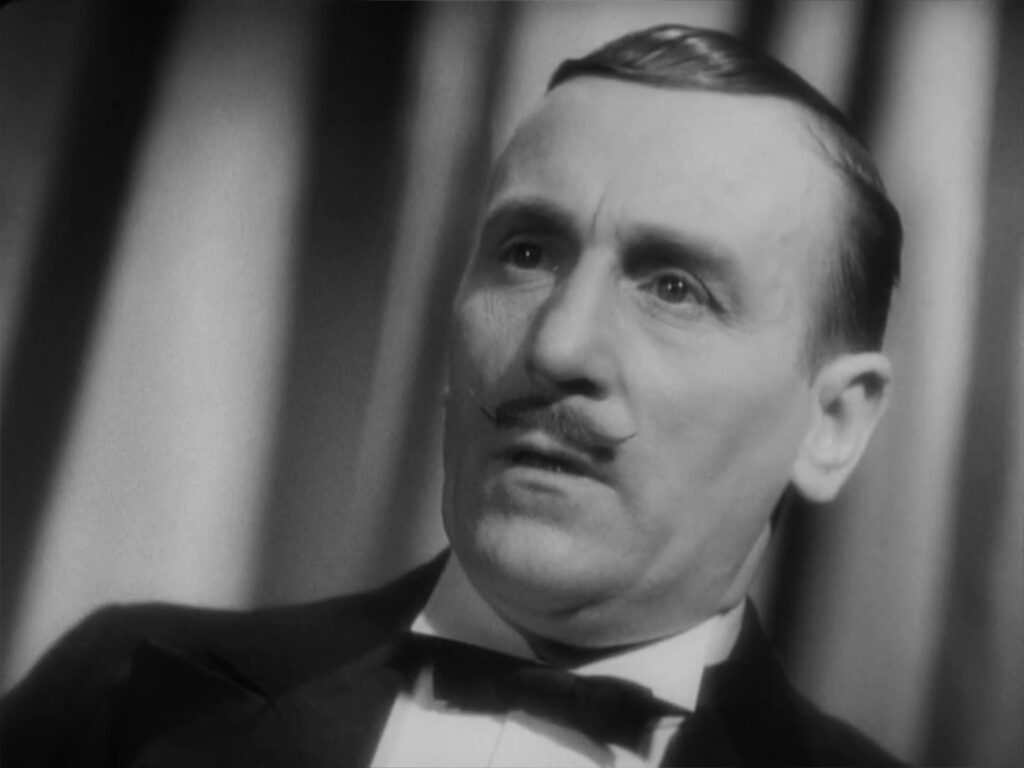
The 39 Steps
1935, directed by Alfred Hitchcock
The 39 Steps climaxes in a single shot near the end, a frozen moment when the outcome could go either way. The shot is a close-up of Mr. Memory composed with a bold simplicity that underscores the man’s shock when Richard Hannay shouts the deadly question: “What are the 39 Steps?”
The climactic close-up is shot off-kilter in high contrast. Its graphic style is like the sensationalistic advertisements of the era, a bit like the main title screen where the numbers and letters of “The 39 Steps” leap out diagonally with dramatic shadow effects. Alternating bands of dark and light behind Mr. Memory accentuate the tilted angle, his face atop a bow tie and a white shirt framed by a black suit jacket. In short, the image is like a giant exclamation point slashed across the screen.
For Mr. Memory the moment is suspended in time. He knows his life is in danger if he answers, yet everything in him, his whole nature and identity, is poised to let the secret out. His ability to answer any question from the audience has been his longstanding pride, as we witness in the opening when he rattles off answers to arcane questions in the cheap music hall. By the end he has progressed from the low class arena to the famous Palladium where London’s high society goes for entertainment. Here, of all places, he faces maximum pressure to meet his audience’s expectations.
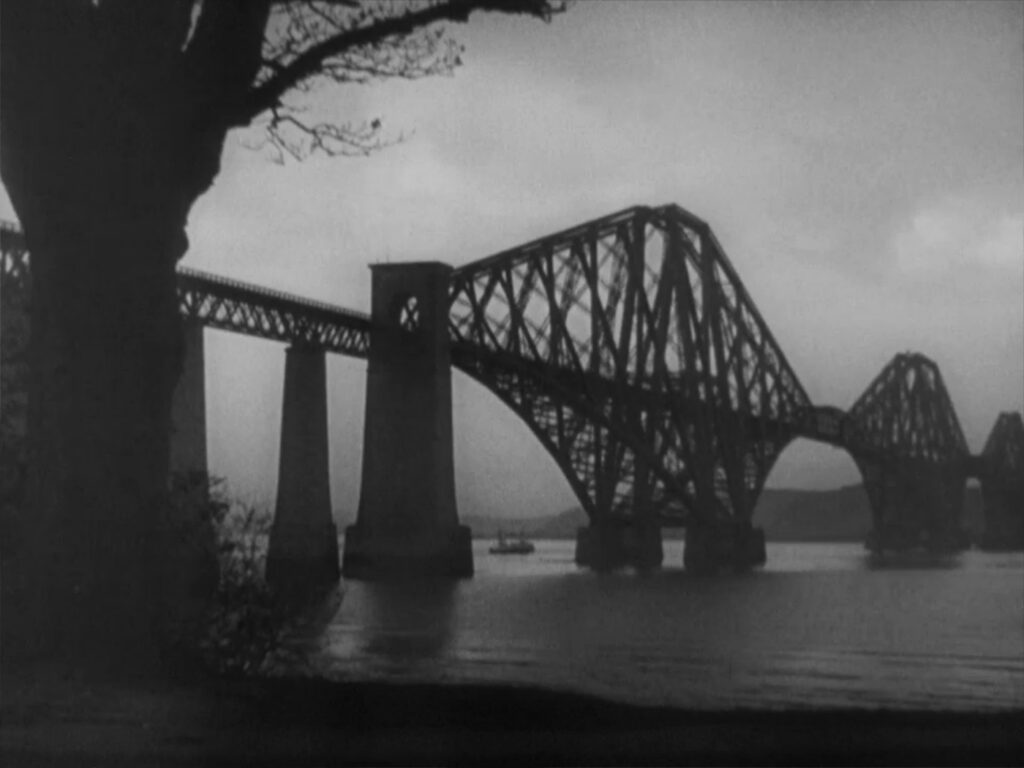
The fact that Mr. Memory elects to reveal the secret of the 39 Steps is a tribute to the idealized British working man who places his role in society above his own wishes. Caught between likely death if he answers Hannay’s question, or the certain prospect of betraying his talents if he doesn’t, his default is to follow his vocation. Is he guided by conscience, or by the proper instincts of a regular working man? In the prevailing British morality there’s little difference. Of course he’s already fallen into the service of traitors and foreign agents, but at the key moment Hitchcock is interested in the man’s natural impulse, which redeems him from aiding treason, much like the nun in The Lady Vanishes. In the end Mr. Memory pays homage to the truth because telling the truth has been his lifelong trade. When he faces Hannay’s question, he cannot not speak the truth.
Mr. Memory is missing from the John Buchan novel Hitchcock adapted for the movie. A man in the book memorizes classified information to convey to Britain’s enemies, but he’s not a stage performer, and there are no music halls or anything like the Palladium. In fact the movie reshapes the plot so completely that only the general concept, Richard Hannay’s name, and a few miscellaneous details survive the adaptation.
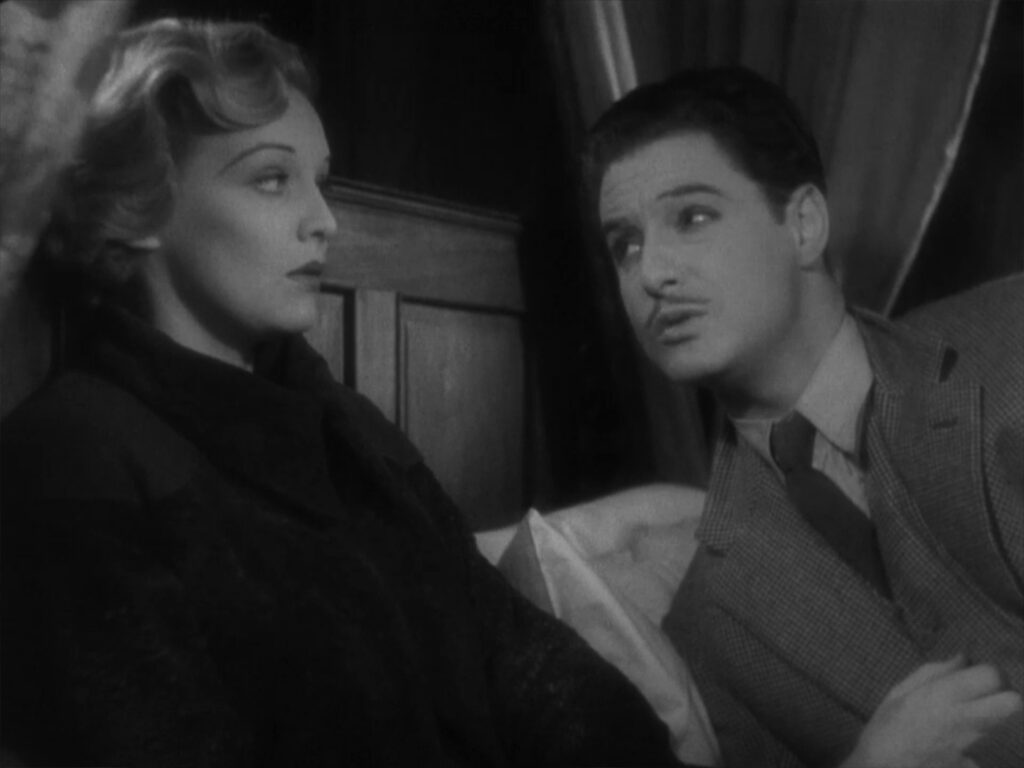
Besides Mr. Memory, a couple other changes to the novel shed insight into the movie. For one thing there are hardly any women in the book, only a few wives and maids in minor roles. Hitchcock reworks the cast of characters, adding two major parts for women and several supporting roles. Secondly, the time setting is updated from the beginning of World War One to the present, i.e. the mid-1930s. Both of these alterations put the movie in a more immediate context, making it relevant to a contemporary British audience.
The 39 Steps is the second in a string of five movies about international intrigue that Hitchcock made before he went to Hollywood in 1939. Although most of these films imagine enemy agents trying to undermine Britain from the European continent, it’s notable that they appear before World War Two started, when most people in the United Kingdom were not worried about Hitler attacking them. All of these films, and The 39 Steps especially, can be read as warnings to the British people to be on their guard. Of course Hitchcock’s forecast proved correct when the German Air Force began a massive attack on the U.K. in 1940.
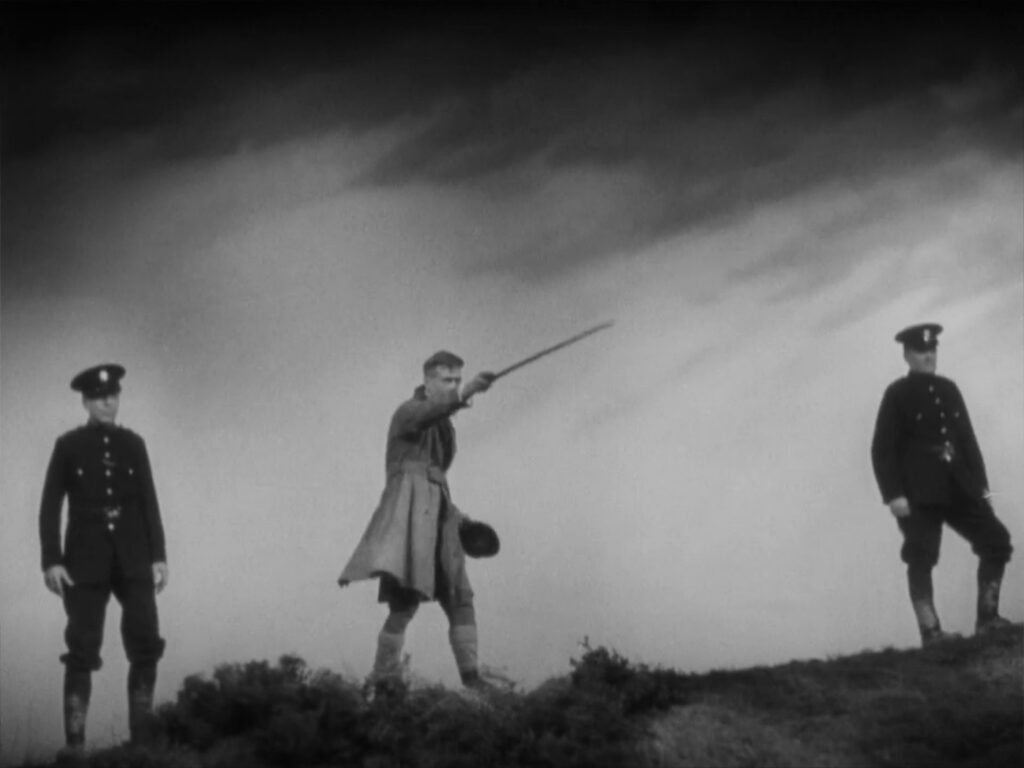
By diversifying the novel’s cast of characters The 39 Steps addresses the whole nation, uniting various walks of life. Leading characters include a foreigner (Annabella “Smith”), a colonial (Hannay, a Canadian), a middle-class English woman (Pamela), an upper-class professor probably educated at Oxford or Cambridge (Professor Jordan), a lower-class Scottish farmer (the crofter), a lower-class city woman (the crofter’s wife), and a working-class urban theater performer (Mr. Memory). The deliberate appeal to a full spectrum of geography, class, and gender reflects the urgency of the film’s message.
Mr. Memory belongs to a larger pattern of allusions to memory, often inserted subliminally. When Hannay trades coats with the milkman to sneak out of his London apartment, the milkman calls after him that he forgot the empties. The crofter (the tenant farmer who puts Hannay up on his first night in Scotland) excuses himself from the house by saying he “forgot to lock the barn”. When the crofter’s wife helps Hannay escape from the police, he tells her twice that he’ll never forget her for doing this. Finally, when Hannay is handcuffed to Pamela he keeps trying to recall where he heard the tune he keeps humming.
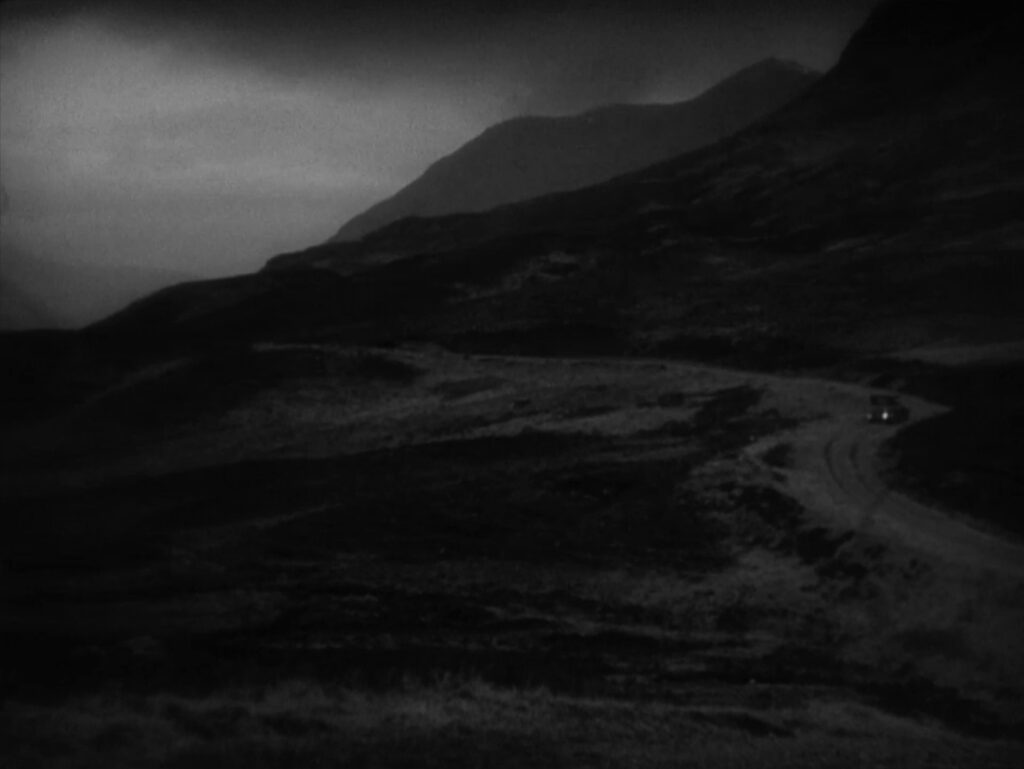
That tune turns out to be the stage prelude to Mr. Memory’s act, as Hannay finally realizes in the Palladium. The reason for Mr. Memory and all of the allusions to remembering and forgetting is exactly the same reason that made it possible for Hitchcock to recycle a 20-year-old story about an international plot to start a European war – namely, the fact that history was about to repeat itself. The movie drills the idea of memory into its audience simply because their lives depended on remembering history and averting a repetition of past tragedies. Hitchcock could see the destabilizing forces from 1914 at work again, and his movies in the 1930s were a wake up call to a bitter reality wrapped in the sweet shell of entertainment.
The 39 Steps does more than encourage remembering history, it also tries to ready its audience for action. So many movies try to sway their audience one way or another, but they all face the problem of inertia. A movie only stays in people’s minds so long, which makes it difficult to inspire real changes in behavior. The 39 Steps at least gives its viewers a model for transformative action. It’s full of exemplary characters who are persuaded to do the right thing after resisting initially. At first Hannay has a hard time believing Annabella, but once he converts to her side he goes all the way, carrying out her mission after she’s killed. Likewise, Pamela doesn’t trust Hannay. She turns him over to the police on the train, and when they meet again she’s reluctant to cooperate until she overhears the conspirators in the inn and decides she can cozy up to him safely.
In the same mold are two parallel incidents where a man decides to help Hannay after changing his mind. The milkman laughs at Hannay’s story about a murderer, but he believes Hannay’s fib about a cheating wife and a jealous husband. The second incident is the reverse because the man starts out believing the worst… the jealous old crofter wrongly suspects Hannay of cheating on him with his wife, but once he hears that the police want Hannay for murder, everything’s all right and Hannay can go.
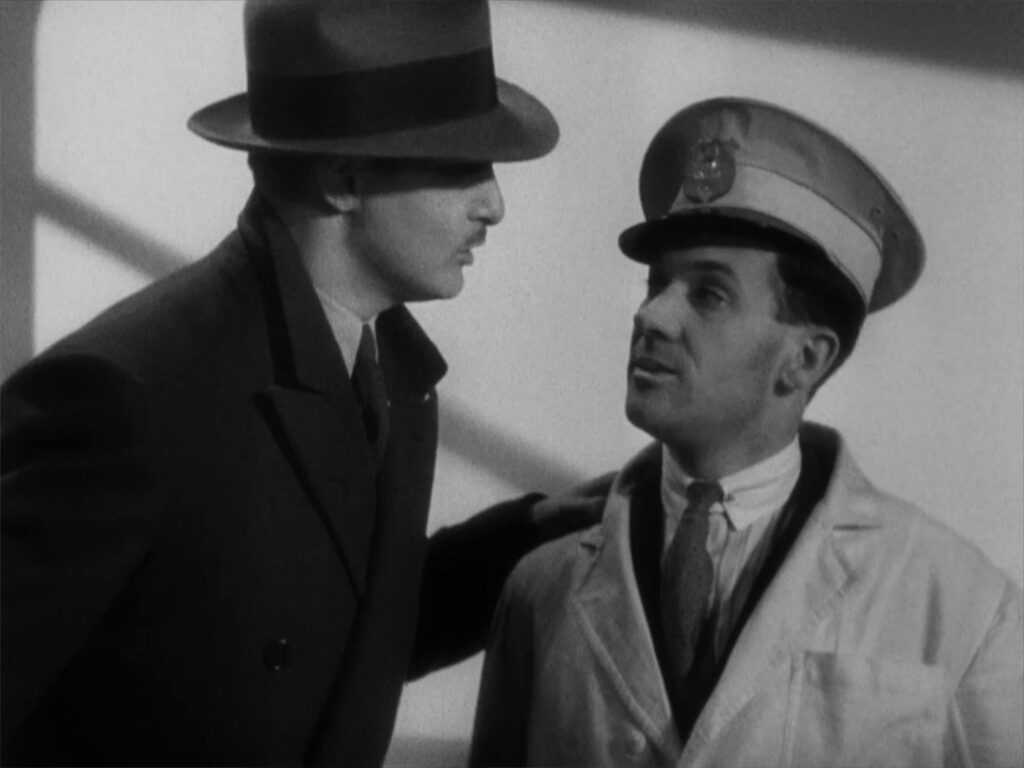
The 39 Steps was a turning point in Hitchcock’s early career. It was a hit at the box office, and it taught Hitchcock how to unite character, dialogue, setting, plot, and all of a film’s elements around a common goal. Hitchcock himself was a little bit like Mr. Memory, having enjoyed memorizing train schedules in his youth. As a movie director he planned every detail so thoroughly that he would become bored during shooting when the creative work of writing and planning was behind him. His enormous capacity for managing details, coupled with a sharp sense of psychology, made him a successful director but also destined him to be inadequately understood because there is always so much more going on in his films than viewers suspect.
CONNECTIONS:
The Lady Vanishes – Memorable supporting character carrying a memorized secret message; urgent need to remember a musical tune; protagonist who knows something no one else believes; impromptu speech appealing to strangers; deprecation of the word “spy”; character who turns against a treasonous plot after assisting in it; train whistle confused with a woman’s scream; male and female leads initially dislike each other; train crosses a spectacular bridge
Saboteur – Frozen image of Mr. Memory / impassive face of the Statue of Liberty
Marnie – Suspense story in which a woman is stuck with a man she initially dislikes